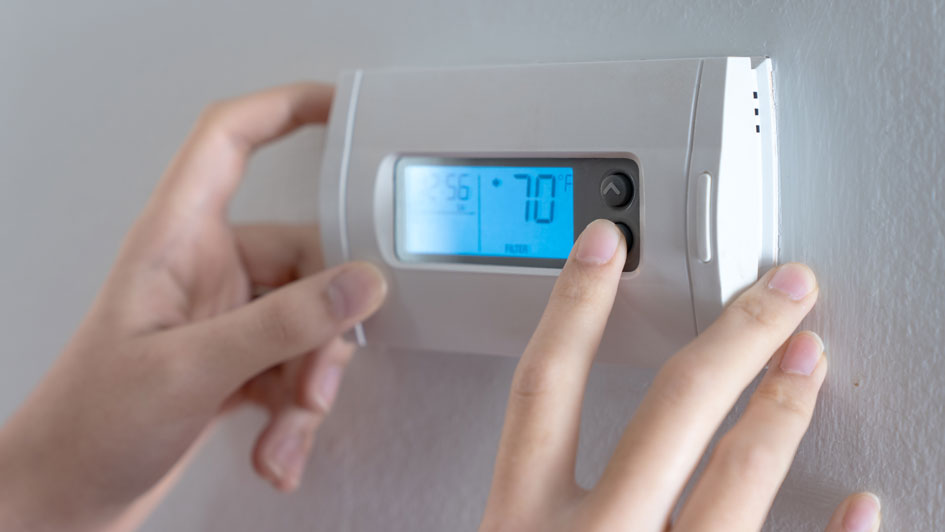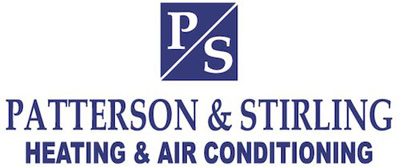
We all like saving money on our monthly utility bills, but you should know there’s a way to keep costs down, even when you're out of the house.
It starts with your thermostat. By using automatic schedules, you can help the thermostat plan for your preferred temperatures. This means establishing various temperature settings for when you’re at home, away or even when you’re sleeping.
If you're willing to make these adjustments, you'll be able to enjoy comfortable temperatures while also keeping more of your money. Check out our guide on how your thermostat doesn't have to use up all your summer spending money:
While at Home
When you’re home, you want a nice range of pleasant temperatures. For the most part, you probably have your thermostat lower in the summer while you are in the house to make the most of the cool air.
But in terms of energy efficiency, the best range for when you're in your home during the summer is usually between 78 and 80 degrees Fahrenheit. By adjusting things a few degrees, you'll avoid the worst of summer while still keeping your energy bills low.
While Gone
If you're setting the temperature for whenever you're gone, it's extremely common to move the thermostat higher than you would if you were in the house.
For some homes, you can set the thermostat to temperatures as high as 88 degrees while no one is home before you adjust it back to the sweet spot of 78-80 degrees after you return. This way, your air conditioning won't have to work constantly to provide cooling for a bunch of empty rooms.
While Sleeping
For a full night's rest during summer weather, you want your thermostat set at a comfortable temperature. A great place to start is between 68-72 degrees Fahrenheit. This will keep you from getting too hot or too cold when you are trying to get some rest.
Other Ways to Use Less Energy:
- Smart thermostat installation: Using a smart thermostat in the summer is an excellent way to reduce energy costs by automatically adjusting to your lifestyle and idea of what comfortable is. A smart thermostat manages the temperature if you are home or sleeping, before allowing it to warm up when no one is around. With reliable brands like the Lennox iComfort, you have the ability to remotely access and change the temperature through your smartphone, tablet or laptop. Requesting smart thermostat installation in your Erie home is an effortless way to set the correct temperature whether you're at home or across the country.
- Update your existing HVAC system: Upgrading your HVAC system can save money in the long run. If a system boasts high energy efficiency, your utility bills will be lower because it requires less energy to heat and cool your home. Air conditioning installation in Erie is a breeze for experienced professionals like Patterson & Stirling.
- Stay on top of routine AC maintenance: Investing in or ignoring regular air conditioning maintenance in Erie can have a big impact on your monthly energy use. By regularly cleaning the coils, checking for damage and clearing ventilation of dust and debris, you may notice your HVAC system perform better during day-to-day use.. Increasing efficiency also limits strain on important or delicate components and lowers operational costs, resulting in lower energy usage and subsequently, smaller bills.
- Replace your air filter regularly: Regularly changing the air filters in your HVAC system saves money by improving airflow. When filters are old and less effective, air conditioners have to work harder, and this greater strain could shorten the system’s life span and result in breakdowns.
- Check your attic insulation: Insulation is one of the key components in any energy-efficient home, keeping the hot air outside and the cool air inside through summer. The North American Insulation Manufacturers Association (NAIMA) offers an official recommendation stating homeowners in souther states should possess at least 13-14 inches of insulation, while states further north need 16-18 inches.
- Review your ductwork: Leaky ductwork can raise your energy bills much more than 20 percent, plus it can potentially allow harmful emissions from your water heater, clothes dryer and other appliances to get into the atmosphere of your home. Watching for signs of leaks and sealing them can help with both these issues.
- Seal all other leaky spots in your home: Finding and sealing any remaining leaks in your home with caulk, foam sealant or weather-stripping helps keep things cooler during those hot summer days. Don't forget to check for any gaps around windows, doors and even outdoor fixtures. Devoting time and effort to sealing leaks now can help you save a lot over time.


